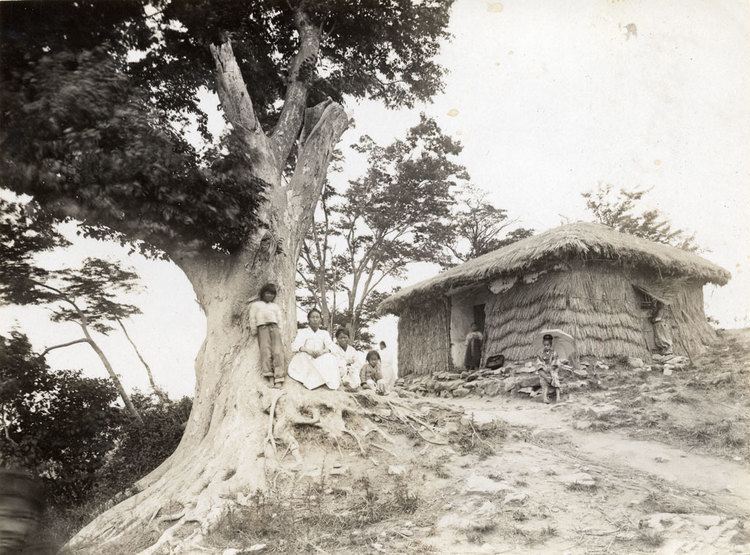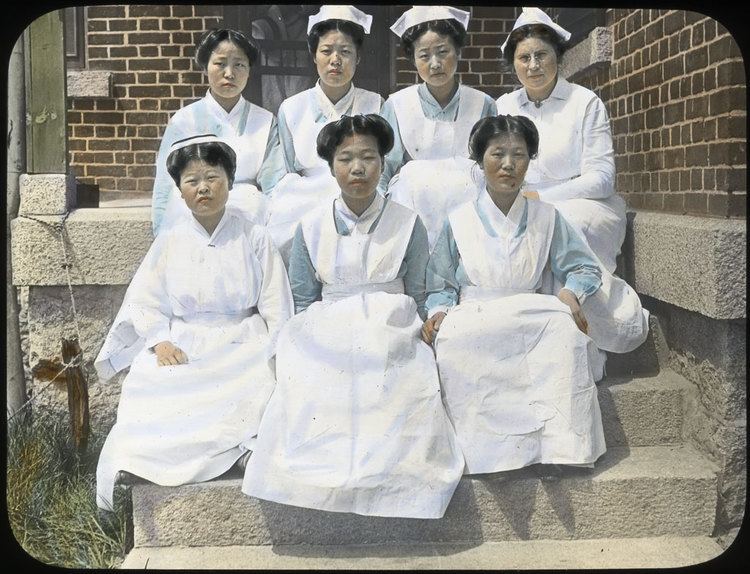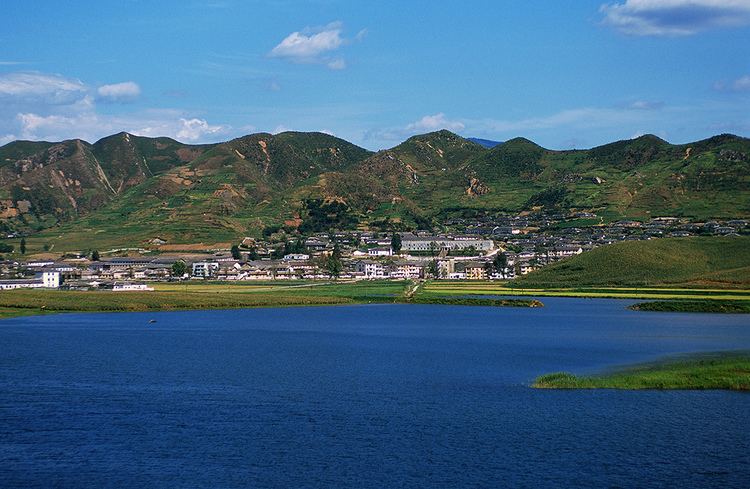Country Area 206.9 km2 | Population 241,599 (2008) | |
 | ||
Map of Haeju
Haeju ([hɛ.dzu]) is a city located in South Hwanghae Province near Haeju Bay in North Korea. It is the administrative centre of South Hwanghae Province. As of 2000, the population of the city is estimated to be 236,000. At the beginning of the 20th century, it became a strategic port in Sino-Korean trade. Haeju has chemical-related enterprises and a cement factory.
Contents
- Map of Haeju
- Bms 4 32 sunset oca strike on haeju
- History
- Geography
- Mountains
- Administrative divisions
- Culture and travel
- Economy
- Transportation
- Education
- Media
- People born in Haeju
- References

Bms 4 32 sunset oca strike on haeju
History

The area around Haeju is known to have been inhabited since the Neolithic period, as shellmounds, pottery, and stone tools have been found at Ryongdangp'o. During the early Three kingdoms period, it was briefly governed by a small chieftain, when it was known as "Naemihol" (內米忽郡). In 757, however, it was conquered by the Goguryeo kingdom, who later lost it to Silla. It was under the Goryeo dynasty's King T'aejo that it received its current name.

Sohyon Academy (소현서원) was a Confucian academy founded near Haeju by the famous scholar Yi I (1536–84) after his retirement. It is situated in Unbyong Valley, a part of Soktamgugok (Nine valleys of pools and rocks.
According to the North Korean government, the North Korean attack on South Korea on 25 June 1950 was a response to a two-day long bombing by the South Koreans and their surprise attacks on Haeju and other places. Early in the morning of 26 July, the South Korean Office of Public Information announced that the Southern forces had captured Haeju. The South Korean government later denied capturing the town and blamed the report on an exaggerating officer. Yugoslavia and the Soviet Union proposed that North Korea would be invited to the UN Security Council to present its side of the story. Both proposals were voted down.
Geography
Haeju City is located at western part of Korean Peninsula, 60 km north of the Military Demarcation Line,100 km south from Pyongyang. This city, being not very mountainous, most part of landforms are composed of plains. All the mountains of this city are under 1,000 m.
Mountains
Administrative divisions
Haeju is divided into several urban neighborhoods ("dong") and several rural villages ("ri").
Culture and travel
Famous tourist attractions in the city center include Puyong Pavilion, the Haeju Dharani Monument, the Haeju Sokbinggo, and several trees classified as living monuments. Farther out, scenic spots include Suyangsan Falls, the Sokdamgugok scenic area, Suyangsan Fortress and the Sohyon Academy.
Economy
Haeju Special Economic Zone was announced in the Second Inter-Korean Summit meeting between the South Korean president Roh Moo-Hyun and the North Korean leader Kim Jong-Il. It was to be a Special Economic Zone centered on the Haeju port. The zone would have consisted of 16.5 km2 of development, and also the expansion of the Haeju port. This project was estimated to cost over US$4.5 billion.
This economic agreement between South Korea and North Korea would have allowed trading across the Northern Limit Line between the ports of Incheon and Haeju, only 110 km apart. Recent military skirmishes make any revival of this deal unlikely for the time being.
Transportation
Haeju has a military and civilian dual purposes air station (HAE), with a 12/30 runway (Haeju Airport). Haeju also has one of the major economic and military ports in North Korea. It is connected to Sariwŏn via the Hwanghae Ch'ŏngnyŏn Line of the Korean State Railway.
Education
Haeju is home to Haeju University of Education, Haeju College of Art, and Kim Je Won Haeju University of Agriculture. Sohyon Academy (소현서원) was a Confucian academy founded by the famous scholar Yi Yulgok (1536–84). It is situated in the Unbyong Valley west of Haeju.
Media
The Korean Central Broadcasting Station airs on AM 1080 kHz using a 1.5-megawatt mediumwave transmitter.
People born in Haeju
Haeju is the home of the Haeju Choi and the Haeju Oh Clan.
